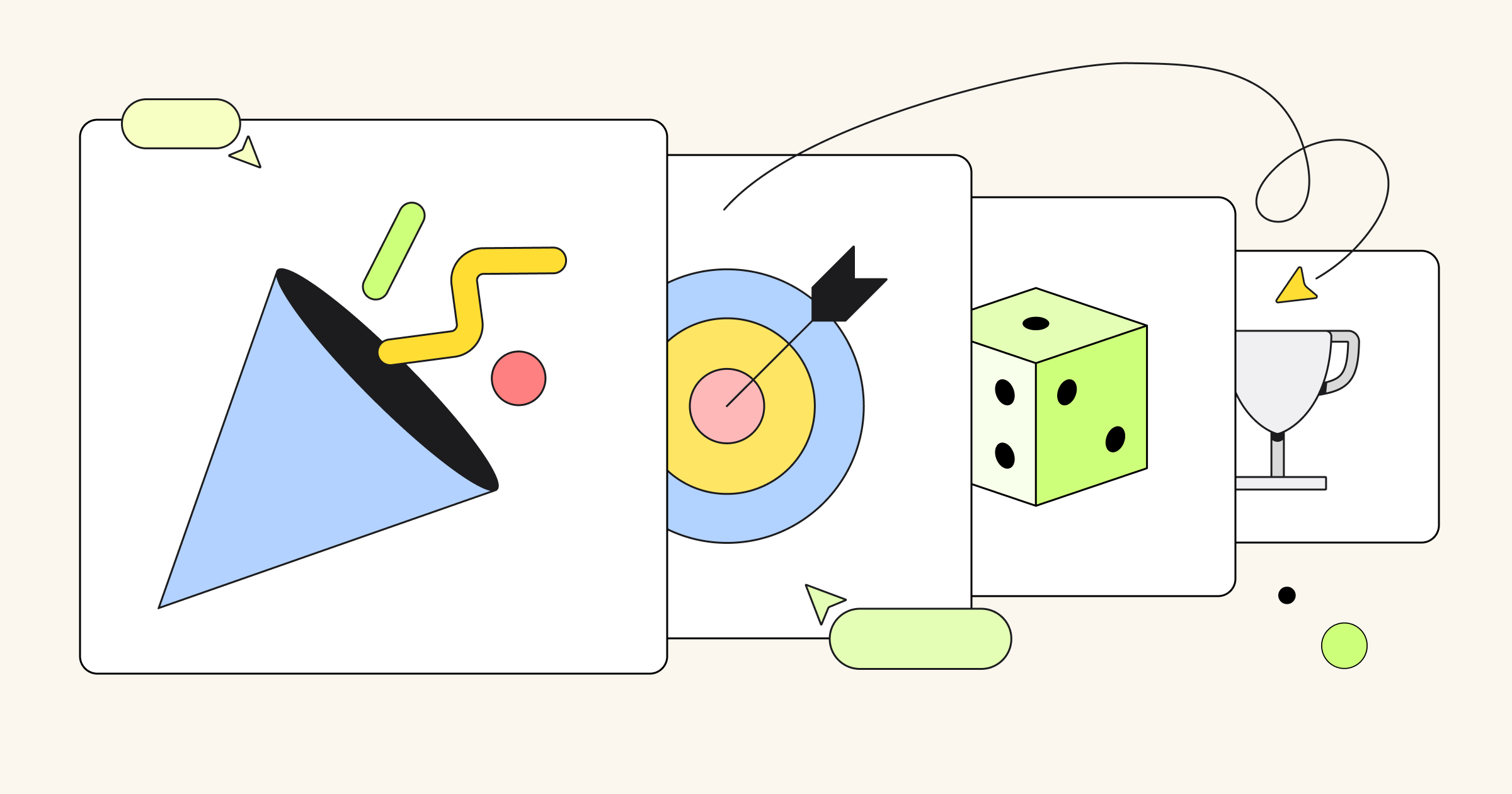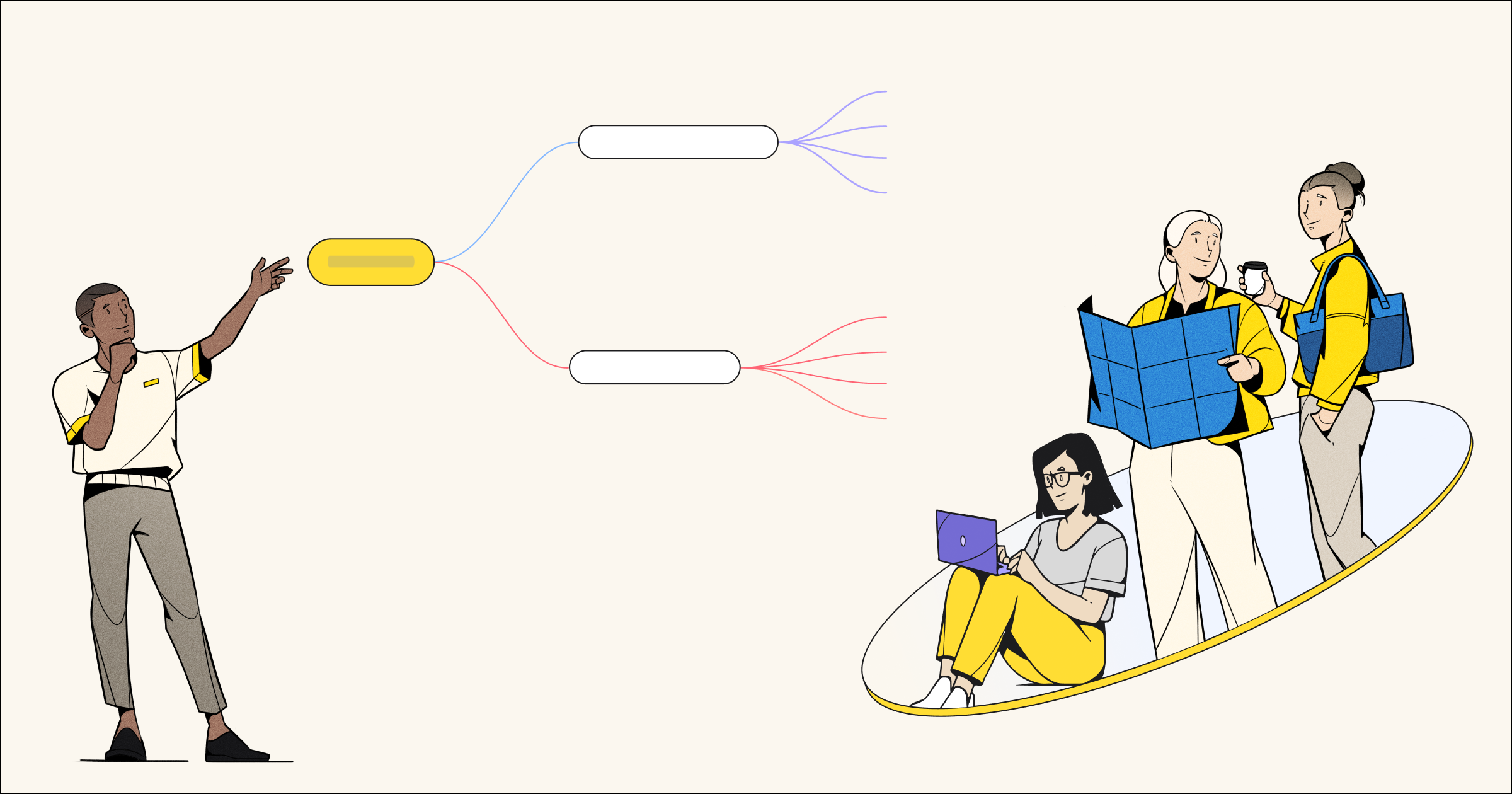Agile methodologies — techniques and practices that prioritize collaboration and flexibility — have long been a reliable fixture on most product teams who want to deliver value while still having the flexibility to adapt to changes.
But as technological advancements, regulatory shifts, distributed teamwork, and rising customer expectations make projects increasingly complex, even Agile methodologies can feel too rigid and one-size-fits-all.
That’s why hybrid Agile, an approach that blends elements from different methodologies, is picking up steam. It allows teams to combine the best aspects of different frameworks and reap the benefits of Agile without feeling too boxed into a single methodology.
3 common project methodologies (and what they do well)
While there isn’t one methodology that’s inherently “better” than another, some are better suited to certain tasks and goals.
Scrum
Emphasizes iterative progress through short development cycles called sprints.
Benefits:
-
Flexibility: Because Scrum is so iterative, it allows teams to respond quickly to changes.
-
Continuous improvement: Retrospectives are a key piece of Scrum, where teams analyze what went well during the sprint and what could go better next time. This reflection fosters an attitude of continuous growth on the team.
- Collaboration: While Scrum has defined roles that contribute to team success (like Scrum Master and Product Owner), the entire approach is highly collaborative and allows for a lot of shared decision-making.
Kanban
Use a Kanban board to visualize work items and how they progress through different stages of your workflow.
Benefits:
-
Flexibility: Like Scrum, Kanban is very flexible and allows teams to adapt to changes. It’s also flexible in terms of work allocation, as work items are pulled into the flow when there’s adequate capacity for them.
-
Transparency: Everyone on the team can easily visualize the work, manage the flow, and limit work in progress.
- Value: Items are prioritized based on customer needs, which means the team can deliver value to customers continuously even with limited work capacity.
Waterfall
Adopts a more traditional and sequential approach to project management, where tasks are completed in a linear order with minimal iteration and feedback between phases.
Benefits:
- Predictability: Waterfall uses a rigid framework with clearly defined phases and deliverables, which makes it easier to plan projects that have a fixed scope and well-understood requirements.
-
Upfront Requirements: There is a lot of time and effort put into designing the requirements upfront, to reduce risk and attempt to minimize changes through the delivery phase.
- Resource allocation: A sequential nature makes it easier to assign teams and other resources to specific phases of the project, which helps you use resources more efficiently.
Blending the best attributes: Why go hybrid Agile?
All of the above methodologies have their selling points and their shortcomings. For example, Scrum is flexible, but it’s hard to predict the project’s scope, timeline, and cost. Waterfall boosts clarity, but it can also be rigid and slow down progress. Kanban illustrates a process, but it’s also easy to get so focused on the flow of work that you lose sight of bigger strategic goals.
This is exactly why a hybrid Agile methodology can be so powerful: It gives teams a way to reap the benefits of each system and customize their approach, rather than treating each project like the next item on a conveyor belt.
Building a hybrid Agile framework: 5 tips to master your mix
Hybrid Agile involves more than picking random parts of each methodology and smashing them together. Here are five tips to be more intentional and strategic as you combine practices.
1. Assess existing processes
Start by evaluating your current processes with your team, with a specific focus on identifying any pain points. Those problem areas are potential opportunities to integrate different Agile methodologies.
2. Integrate principles
When you know your pain points, you’re better equipped to identify other Agile methodologies that can address them.
For example, perhaps your team uses Scrum and, while they like the sprint planning and retrospectives, they might lack visibility into the work. Adding a Kanban board can improve transparency.
Or maybe you need to better communicate deadlines and expectations to clients. Incorporating Waterfall’s milestone planning can give your team and your clients more clear parameters. Or perhaps individual teams or functions are siloed. Using Big Room Planning can foster a deeper level of collaboration.
3. Adapt team structure
If your approach to projects is flexible, your team structure needs to follow suit. You will likely need to tailor roles and responsibilities to fit a hybrid model or potentially eliminate prescribed roles altogether.
Take Spotify, for example. The “Spotify model” builds autonomous teams around a single mission, and those teams dissolve when the mission is achieved.
Of course, you don’t have to do exactly that. Remember, the goal is to find what works best for your projects and organization. However, Spotify’s system is a helpful reminder that you have room to think outside the confines of a typical org chart.
4. Find the right technology
Changing your approach often goes hand-in-hand with changing your technology. It’s tough to pioneer a new way of working if you’re stuck using the same dusty platforms. From digital Kanban boards to Information Radiators that offer complete flexibility for teams to visualize and track their work, make sure you have the right tools to facilitate hybrid Agile.
5. Commit to continuous improvement
Continuous improvement is a core principle of any Agile methodology and that doesn’t just apply to the work you’re doing — it applies to the way you’re doing it.
Pay close attention to project outcomes and solicit team feedback so you can refine your hybrid methodology as you learn more about what works (and what doesn’t). Keep what works, iterate on or discard what doesn’t — be pragmatic and not pedantic with your self-organization choices.
Create a winning combination with hybrid Agile
Any methodology should support your team, not stifle them. And while Agile has always been focused on flexibility, it’s easy to get too attached to a specific methodology even when it’s not serving your team’s needs. Customizing your approach can help you meet the unique demands of a project, while still benefiting from the structure and clarity of a defined framework.
Worried about getting your team on board with hybrid Agile (especially if you’ve been white-knuckling a specific methodology up to this point)? Start small with training and pilot projects that can demonstrate quick wins.
Once they see what’s possible, they’ll have an easier time focusing on what works — rather than the workflow.






